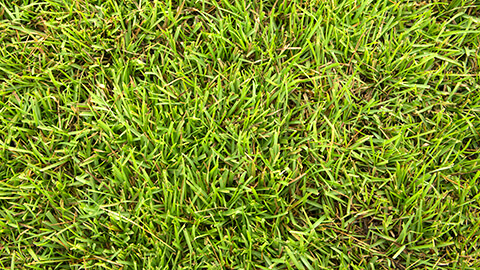In this guide to Centipede, we'll discuss everything from cost to best mowing height while also looking at the pros and cons. By the end, you'll be perfectly positioned to know whether it's the right sod type for you.
What Is Centipede Sod?
Centipede sod is a popular a warm-season grass. It's known for its low maintenance and we love it for its durability too. It thrives in warmer climates and is a popular choice in the Southern U.S. in states like Georgia, Alabama, Mississippi, and Louisiana where the climate is warm and humidity is high.
Characteristics of Centipede Sod
Slow-growing: Less mowing for us.
Low fertility requirements: Saves on fertilizer.
Acidic soil tolerant: Good for many soil types.
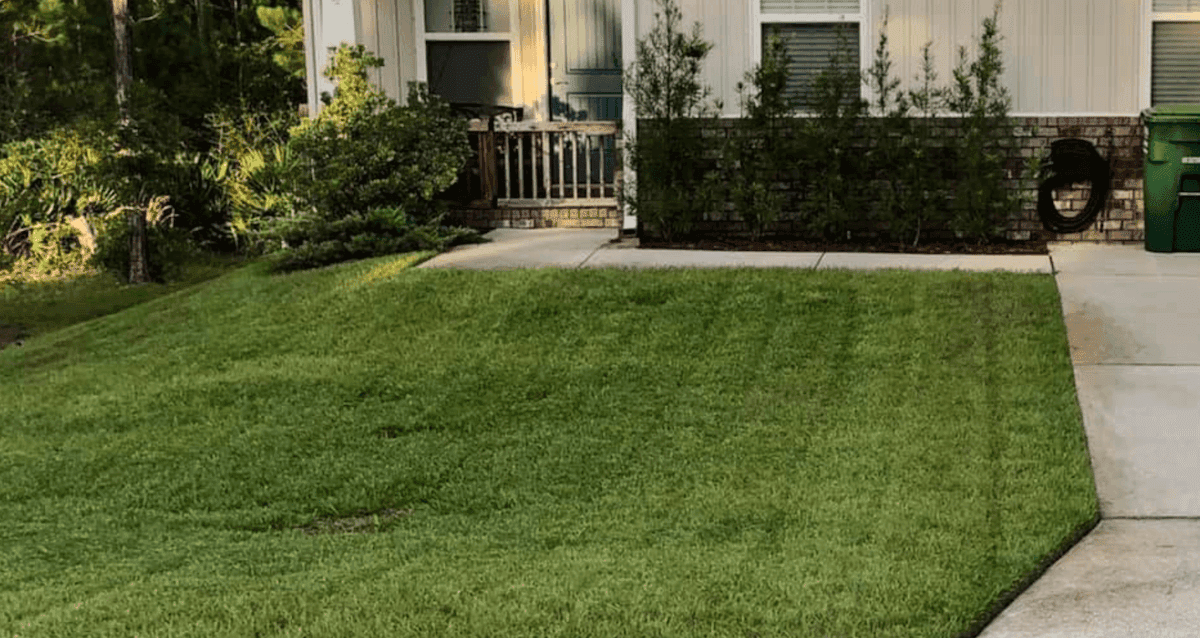
Centipede grass forms a dense, uniform sod. It's medium to light green. We find it often in suburban lawns.
Planting Centipede SodOur process here is straightforward. We lay down rolls or squares of pre-grown grass. It's important to prepare the soil beforehand. Watering it well helps it take root.
When Do We Plant It? The best time is late spring through early summer. This gives it time to establish before winter.
Remember, centipede sod is slow to spread. Patience is key. We don't expect a thick lawn immediately. But it's worth the wait. Once established, our lawn maintenance drops significantly.
Defining Facts and Features
Centipede sod is unique. We can spot it by its medium to light green color. It's not just the color that stands out. Centipede grass has a coarse texture. That's because the leaves are wider compared to other grasses.
Here's what makes centipede sod different:
Growth Pattern: It grows low, which means less mowing for us.
Spreading: It spreads by stolons, or horizontal shoots. These shoots help centipede sod to cover bare spots fast.
Drought Tolerance: It can survive drought. When water is scarce, our centipede lawn will hang in there.
Soil Preference: It loves acidic soil, with a pH of 5.0 to 6.5.
Maintenance: It's low-maintenance. We don't need to fertilize it too often.
We also need to keep an eye on shade tolerance. Centipede sod prefers full sun. It can handle light shade, but too much shade isn't good.
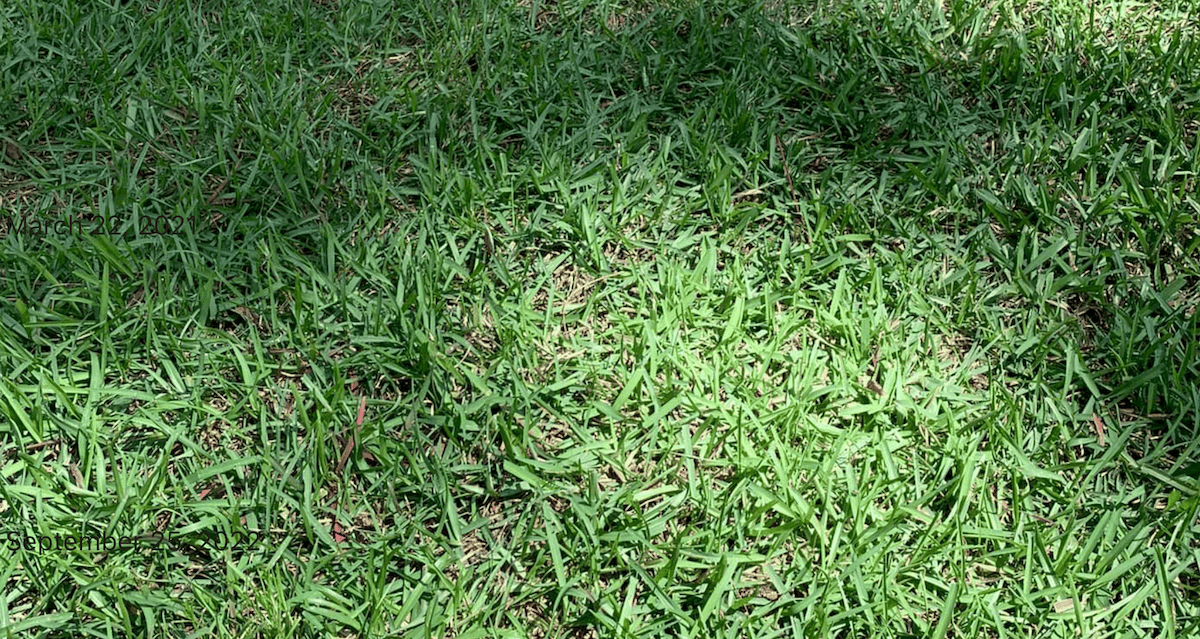
Finally, let's not forget temperature. Centipede sod thrives in warm climates. It's perfect for us in the Southeastern US.
Here's a quick rundown:
Medium to light green color
Coarse texture
Low growth means less mowing
Spreads out with stolons
Survives drought well
Prefers acidic soil
Low-maintenance
Good in warm climates
Centipede sod could be just what we need. Its features make it a winner for many of us looking for a reliable, low-maintenance lawn.
When to Lay Centipede Sod
Laying centipede sod at the right time is vital. We want to catch that growth sweet spot. Ideal conditions matter more than the calendar date.
Soil Conditions
First things first, we've got to talk dirt. Centipede sod loves soil that's:
Warm: Optimal soil temps are between 70°F and 90°F.
Nutritional Balance: pH level should be between 5.0 and 6.0. Got a test kit? Use it.
A warm and slightly acidic soil is where centipede sod thrives. Make sure to test before laying sod.
Light Conditions
Now, let's shine a light on centipede sod preferences. It's all about that sunshine!
Full Sun: Aim for 6 to 8 hours of direct sunlight daily.
Shade Tolerance: Minimal, so keep it sunny, folks!
We need those golden rays to keep the sod happy. Too much shade and it's game over for growth.
Where to Buy Centipede Sod
Looking for centipede sod can feel like a treasure hunt. We want our lawns to look perfect, right? It's all about knowing where to look. So, buckle up! Let's dive into the best spots to grab centipede sod.
Level Up Your Lawn Skills
Once per week we'll send you an interview from someone who has mastered the art of lawn care.
Local Garden Centers & Nurseries First stop, we can hit up local garden centers. These places often have fresh sod rolls just waiting for us.
Pros: Get expert advice and see what we buy.
Cons: Might be pricier than other options.
Big Box Home Improvement Stores Got a Home Depot or Lowe’s around? We can swing by. They usually stock various types of sod.
Pros: Convenient for a quick pickup.
Cons: Selection might be limited.
Online Retailers Fancy shopping from your couch? No problem. Online stores can ship centipede sod right to our doorstep.
Pros: Shop many options.
Cons: Can’t touch or feel before buying.
Landscape Suppliers When we want the professional touch, these suppliers are the go-to. They'll hook us up with high-quality sod.
Pros: Bulk buying options.
Cons: May require a larger purchase.
Farm Direct Feeling adventurous? We can go straight to the source. Sod farms sell directly to consumers.
Pros: It might be fresher and cheaper.
Cons: We’ll possibly have to drive out there.
Remember to ask about the sod's origin and freshness at each place. Freshness is key to a lively lawn. And there you have it! Let's get to it and outfit our yards with the best centipede sod out there. Happy hunting!
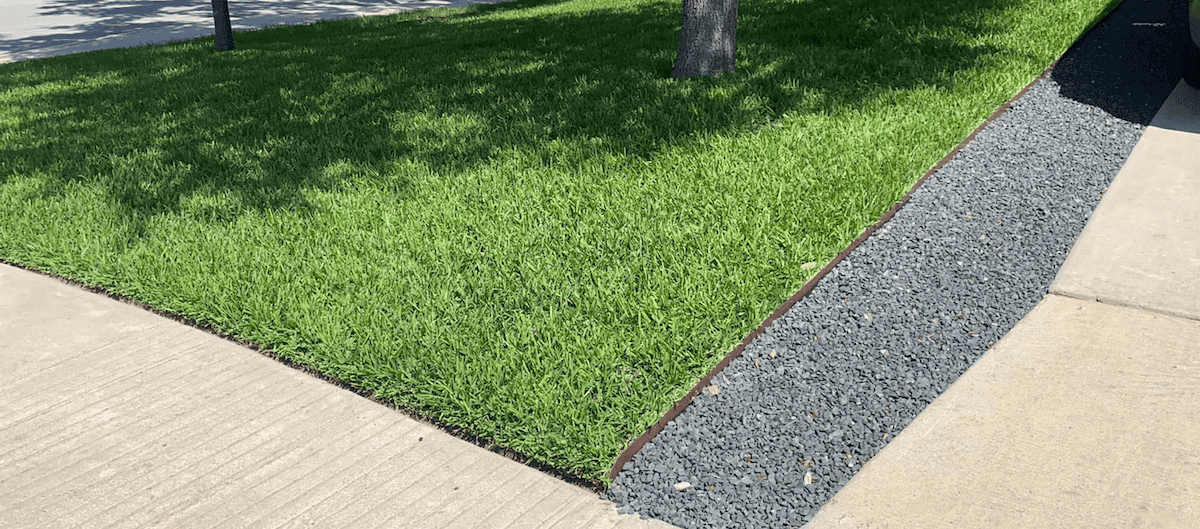
A Note on Measurement: Rolls, Pallets and Square Feet
When we buy centipede sod, we measure it in rolls, pallets, or square feet. It's important to know how much we need. Here's a quick guide.
Rolls of Sod:
Each roll is typically 10 square feet.
Size: usually 2 feet by 5 feet.
Pallets of Sod:
A standard pallet covers about 500 square feet.
But sizes can vary!
To calculate the total square footage needed for your project, follow these steps:
Measure the length and width of the area in feet.
Multiply the length by the width.
This gives us the area in square feet.
Measurement Unit | Coverage |
1 Roll of Sod | 10 square feet |
1 Pallet of Sod | ~500 square feet |
Before ordering, remember:
Measure your area carefully.
Always buy a bit extra for mistakes or patching.
That's our take on measurements. Get this part right, and we'll be off to a good start!
Choosing a Contractor to Install New Sod
When we're picking a company to install our centipede sod, we gotta check their rep and services closely.
Installer Estimates: Prices, Quotes, and the Final Cost
We all love a good deal, but we've gotta be smart about the numbers. Prices can be sneaky, so here's the lowdown:
Quotes are what we first see, kinda like a teaser. Companies toss these out to catch our eye.
Actual Cost is the full tab we foot once the job's done. What we thought was cheap can sometimes balloon up.
So, we've gotta ask companies to break down their quotes. We want no surprises, just a clear-cut list of what we're paying for:
Labor
Sod
Preparation
Clean-up
We should also ask how they handle unexpected costs. Life's full of surprises, and we want a team that's upfront when curveballs come. A real talk about money can save us headaches later on.
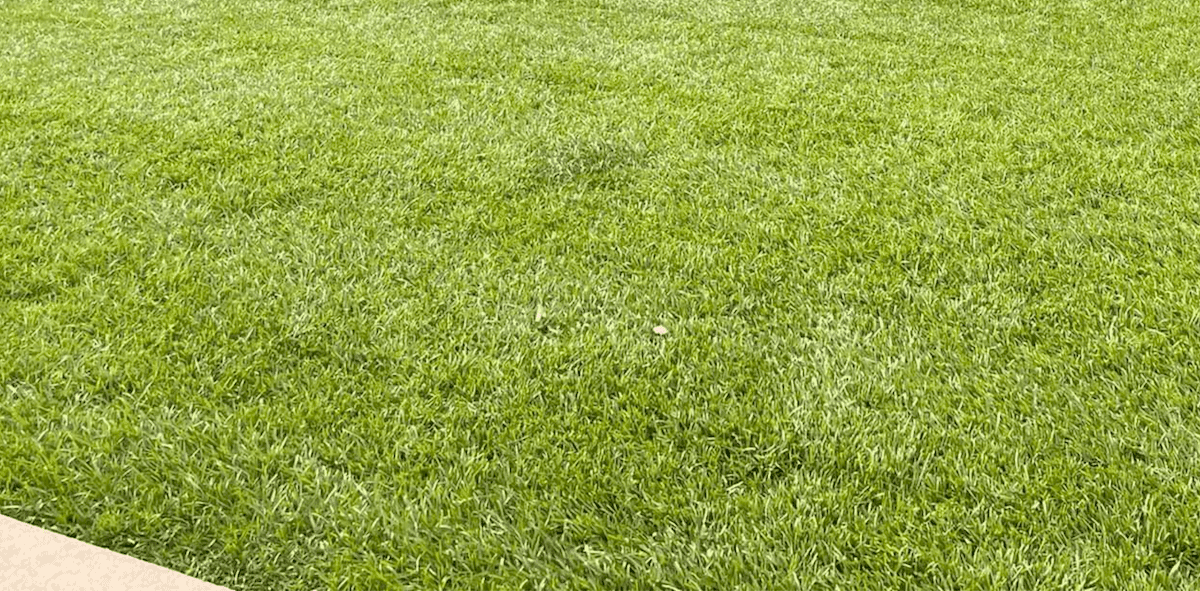
Key Characteristics of Centipede
Centipede sod is a popular choice for many lawns due to its unique features. Let's dive into what makes it stand out.
Durability and Resilience
We've found that centipede grass is tough, really tough. It forms a dense, weed-resistant turf that can take a beating from foot traffic. Plus, it's not just about being strong; it bounces back with ease after stress.
Dormant Season
In cooler months, centipede grass takes a nap. Its dormant season is usually during the cold winter. But don't worry, it's not dead. The grass just takes a break and waits for the warm embrace of spring to return to its vivid green color.
Drought Tolerance
Here's the thing about centipede grass—it's like a camel of the plant world. It can handle dry spells like a champ. But it's not invincible; extended drought can stress it out, so occasional watering helps it stay lush.
Cold Tolerance
When it comes to cold, centipede sod is like us with a light jacket on—it can handle a little chill. It's resistant to moderate cold, but if the winter gets too harsh, it might need a little extra care to protect it from frostbite.
How to Care for Centipede Sod
We need to keep our centipede sod happy and healthy. Here's how we do it, step by step.
Cleaning and De-Thatching
First things first, we remove the dead stuff. Centipede lawns need cleaning once a year. When we see thatch over half an inch, it's time to de-thatch. This means in spring, we're out there with a rake or a de-thatching machine.
Core Aerating
Next up is aerating. Our grass loves to breathe! We make small holes in the soil to let air and water deep down. This helps the roots grow strong. We do this once every couple of years.
Mowing
Now, let's talk about trimmin' those greens. We keep our mower blade sharp and set it to cut our centipede sod to about 1.5 to 2 inches tall. This means mowing often, but not too much at once. Never chop off more than a third of the grass blade.
Watering
Watering is key. We get the hose out when we notice the leaves start to wilt. Centipede sod needs about 1 to 1.5 inches of water per week. Early morning is the best time to water to reduce evaporation.
Fertilizing
We feed our lawn with the right stuff. Centipede sod doesn't need much. A pound of nitrogen per 1,000 square feet per year should do it. We split this into two feedings: one in early spring and another in late summer.
Controlling Pests
Last but not least, we've got to keep those bugs in check. If we spot trouble like chewed leaves or brown patches, we use a pesticide made for centipede sod. But we don't go crazy. We only use it when we have to.
Pros & Cons of Centipede Sod
Pros:
Low Maintenance: We love centipede sod because it's low maintenance. It doesn't need much fertilizer or mowing.
Drought Tolerant: It can handle dry spells. That's great for water savings!
Acidic Soil Friendly: Got acidic soil? No problem. Centipede sod thrives in it.
Pest Resistance: Fewer pests bug centipede sod. That means we bother less with pesticides.
Cons:
Slow Growth: Be patient. Centipede sod grows slowly. Don't expect a quick lush lawn.
Cold Sensitive: Frosty weather? Wrap up your centipede sod. It doesn't like the cold.
Thatch Buildup: Watch out for thatch. Centipede sod may need extra care to prevent it.
Limited Shade Tolerance: It loves the sun. Shade? Not so much. Plan your garden layout accordingly.
Aspect | Centipede Sod |
Maintenance | Low |
Drought Tolerance | High |
Soil Preference | Acidic |
Pest Resistance | Good |
Growth Rate | Slow |
Cold Tolerance | Low |
Thatch | Possible Issue |
Shade Tolerance | Limited |
We find centipede sod to be a solid choice for various gardens. Just remember its likes and dislikes, and you've got this!
Frequently Asked Questions
We've got the scoop on the common questions folks ask about centipede sod. Quick tips, clear answers.
How can I encourage centipede grass to grow more quickly?
We make sure our soil is nice and acidic, with a pH between 5.0 and 6.0. Also, we don't get lazy on the watering. Steady moisture helps it sprout fast.
What's the best time of year to plant centipede grass seed in southern states like Georgia?
We aim for late spring to early summer. That's when the soil is just right — warm enough for the seeds to germinate.
Why does centipede grass seed typically come with a higher price tag?
Centipede seed production is tricky, it's lower yielding compared to other grass seeds. So, we're really paying for the extra effort to get it to our lawns.
Is there something specific I should be putting underneath centipede sod before installation?
Yep! We spread a layer of sandy, acidic soil. It's what centipede sod loves best. Keeps it healthy and helps it take root.
Does centipede grass require high maintenance?
Centipede grass is generally considered low-maintenance, ideal for homeowners looking for an easy-to-care-for lawn option. It requires less watering, fertilizing, and mowing compared to other grass varieties.
However, it's essential to perform some regular maintenance tasks to keep it healthy and attractive, such as proper watering, mowing at the correct height, occasional fertilizing, and dethatching when needed.
Centipede versus other types of sod
- Centipede vs. Bermuda comparison →
- Centipede vs. Buffalo comparison →
- Centipede vs. Zoysia comparison →
- Centipede vs. Tall Fescue comparison →
- Centipede vs. Kentucky Bluegrass comparison →
- Centipede vs. Perennial Ryegrass comparison →
- Centipede vs. St. Augustine comparison →
- Centipede vs. Fine Fescue comparison →
- Centipede vs. Bahia comparison →
Level Up Your Lawn Skills
Once per week we'll send you an interview from someone who has mastered the art of lawn care.

